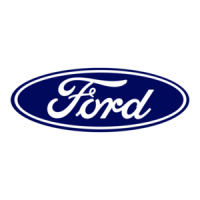
Do you have a question about the Ford 2723 and is the answer not in the manual?
Procedure to stop the engine by pulling out the stop control lever.
Setting the engine speed within the governed range using the control lever.
Device to supply additional fuel for cold starting, manual or automatic operation.
Ensuring full clutch engagement for normal operation to prevent wear.
Registers charging and discharging current, indicating battery status.
Indicates actual engine running speed in crankshaft revolutions per minute.
Records engine operating hours for service scheduling.
Energises 'Thermostart' heater plugs for cold starting.
Operation of non-electric cold start aids, caution with ether.
Registers lubricating system pressure to ensure correct function.
Indicates the quantity of fuel oil in the fuel tank.
Enables close check on coolant temperatures.
Checking coolant level and filling with anti-freeze/corrosion inhibitor.
Ensuring the battery is fully charged and topping up with distilled water.
Checking fuel level and engine oil level before operation.
Procedure for lay-up of turbocharged engines for over four weeks.
Steps to start a warm engine, including speed control and isolating switch.
Procedure for cold starting engines without extra cold start aids.
Procedure for cold starting engines equipped with 'Thermostart'.
Procedure to prevent turbocharger bearing damage from inadequate lubrication.
Steps for cold starting turbocharged engines using Thermostart.
Schedules for daily, 50-hour, 200-hour, 600-hour, and 1200-hour maintenance.
Detailed steps for changing engine oil, including oil specification and viscosity.
Ford Specification SM-2C-1017A oil and viscosity chart for ambient temperatures.
Adjusting single or twin belt drive for alternator and water pump.
Adjusting single belt drive for turbo-charged marine engines without fans.
Adjusting twin belt drive for intercooled marine engines without fans.
Adjusting drive belts for high level fan applications.
Diagnosing reasons why the engine will not crank or cranks slowly.
Troubleshooting mechanical and fuel system issues when starter operates normally.
Maintenance notes for turbocharged engines, including air cleaners and turbocharger checks.
Scrupulous cleanliness required for refuelling to prevent fuel system damage.
Description of the open cooling system components and their maintenance.
Description of the sealed cooling system and its maintenance intervals.
Description of the raw water cooling system used in marine applications.